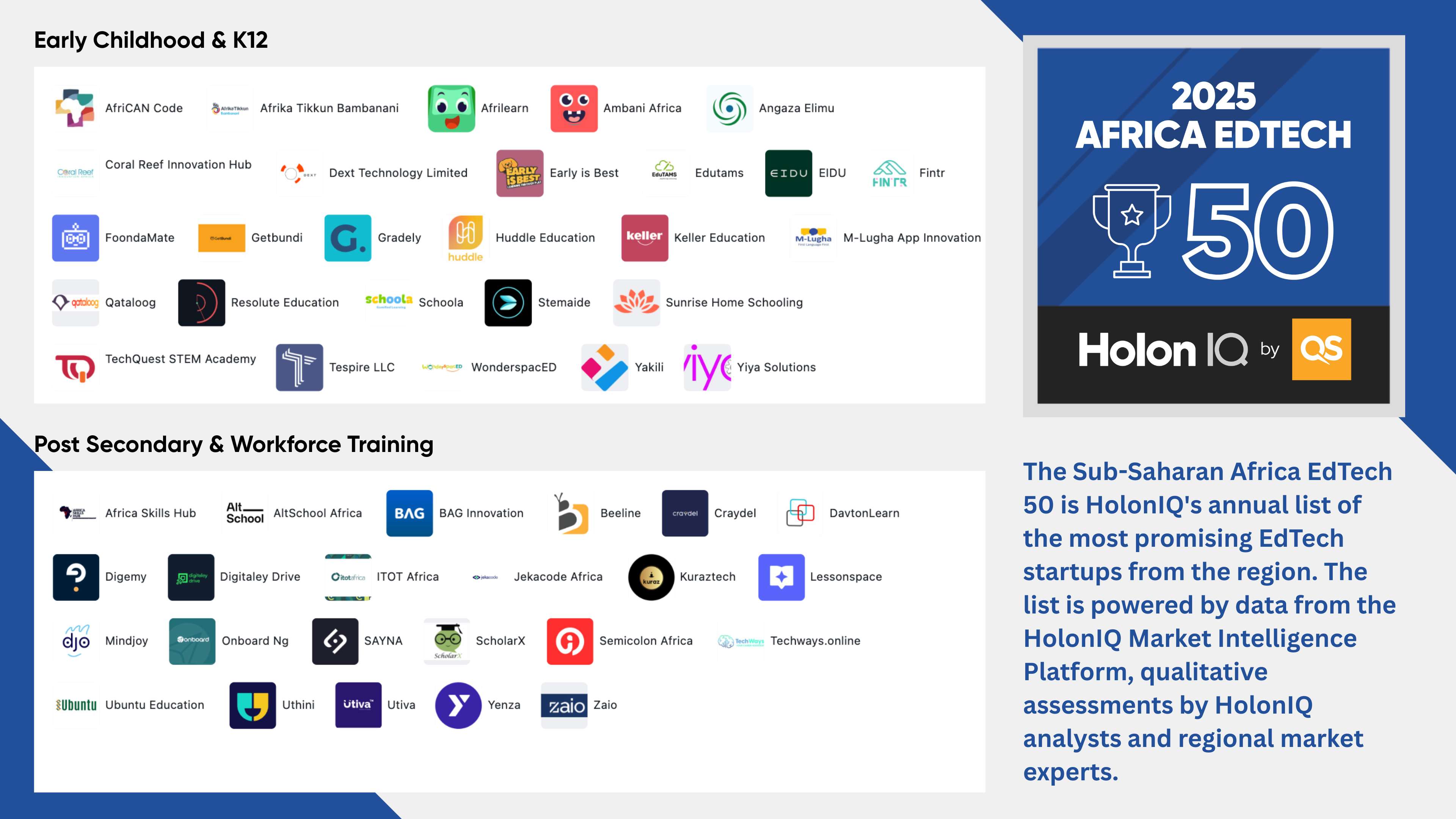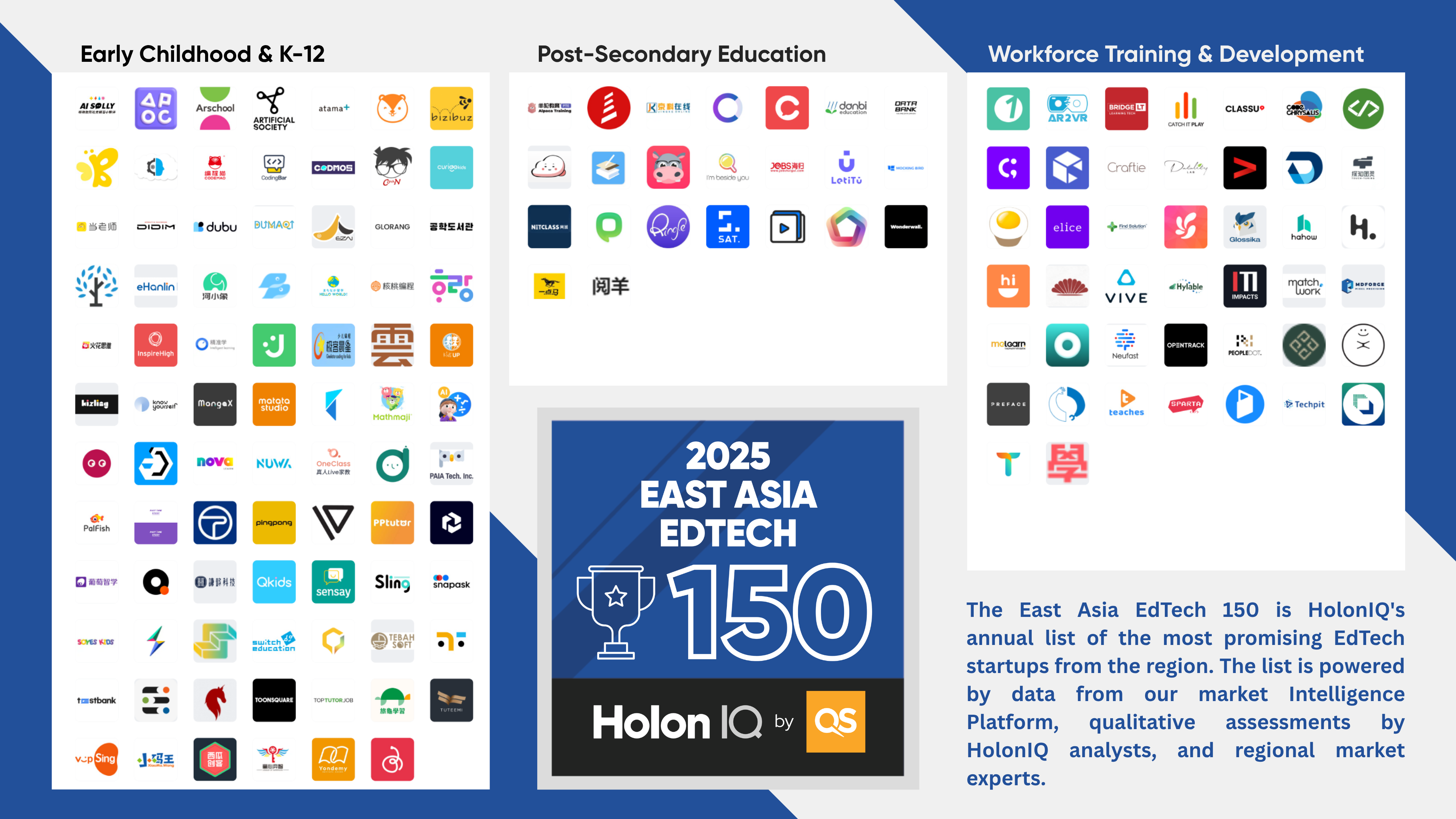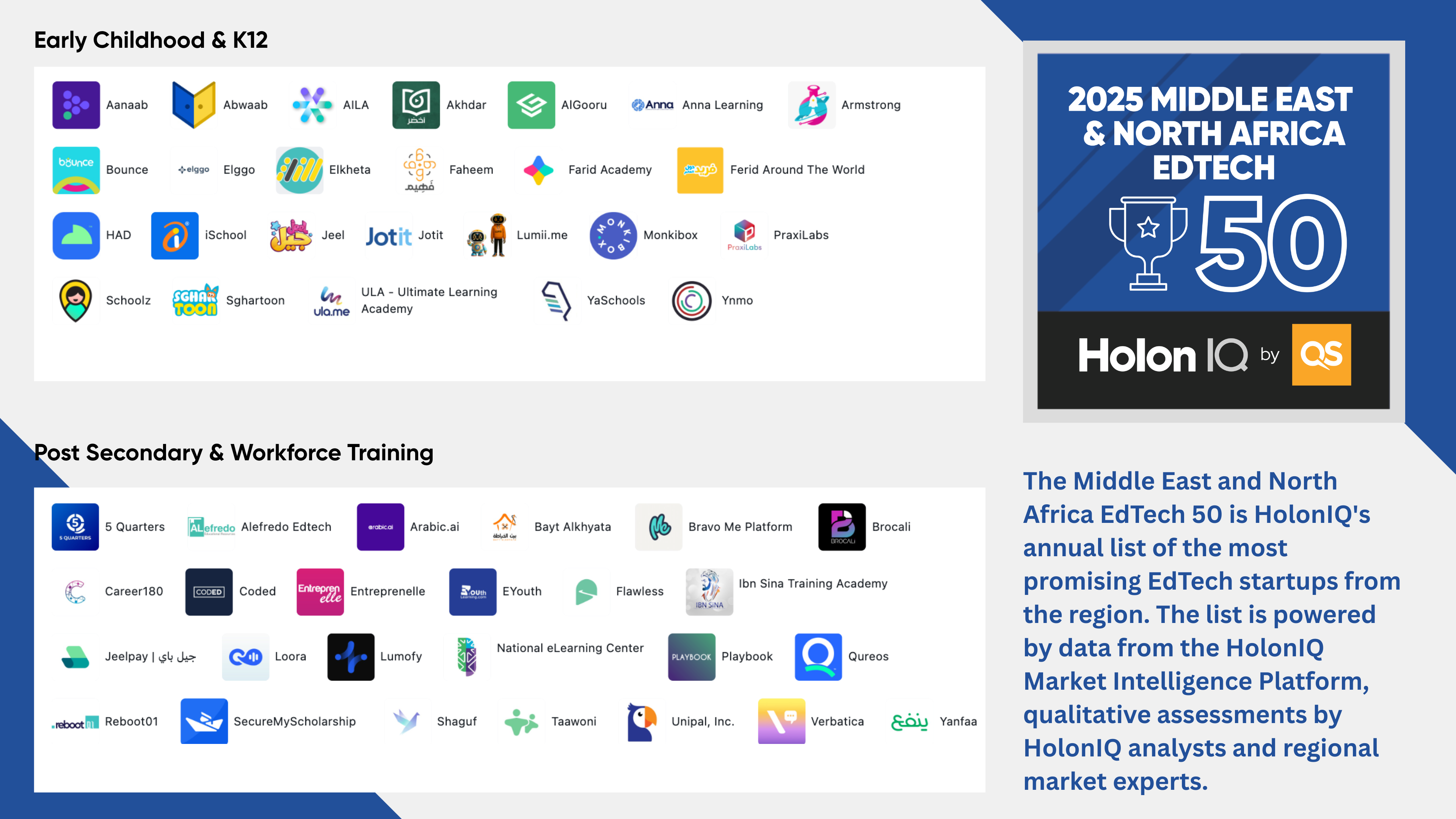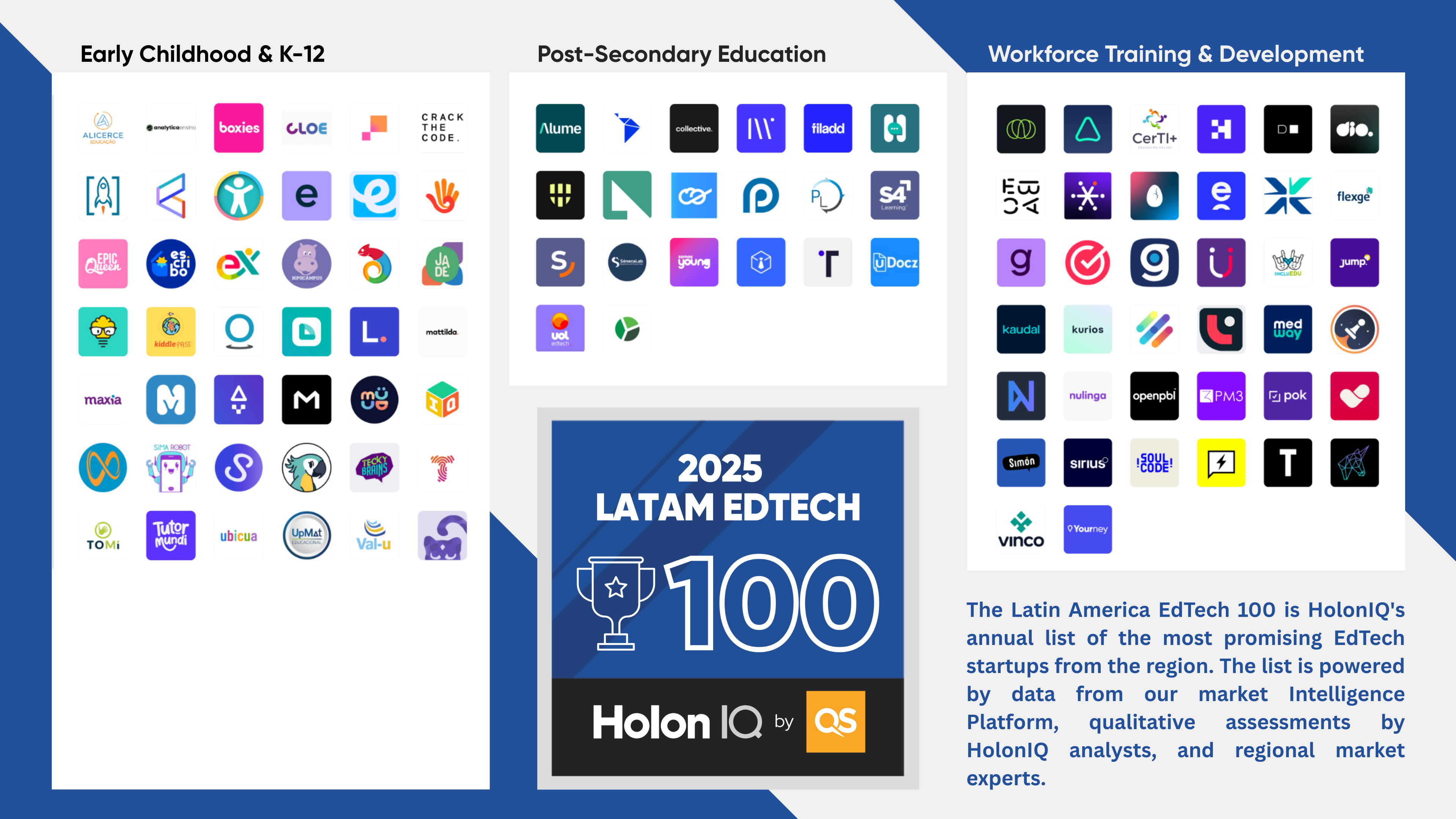AI is the fastest growing advanced technology segment in education globally. Our annual deep-dive is 88 pages of AI market data from Pre-K to Lifelong Learning.
Set for Growth and Impact.
AI adoption in education will explode over the next five years and is expected to reach global expenditure of $6b by 2025. Much of the growth will come from China followed by the USA, together accounting for over half of global AI education spend.
5 core applications underpin uses of AI in student acquisition and support through to assessment, learning and job placement. We see strong growth in some of these applications with key players growing within and across markets as education institutions adopt AI driven services and report positive impact from adoption.

AI Adoption Hotspots.
HolonIQ analysts have sifted through the thousands of companies reporting the use of artificial intelligence in their services, identifying 400+ organisations that have AI applications at the core of their offering in the education and talent market.
Hotspots of AI use in education are in the Knowledge cluster, where AI is supporting both personalised knowledge finding and knowledge creation processes. There is deep use of AI in specific areas of learning process – particularly games and simulation, voice recognition, robotics and STEM education. Language Learning, testing and student acquisition have historical strength in AI use, while talent acquisition and performance management areas are seeing increased uptake and impact from AI applications.













.png)







